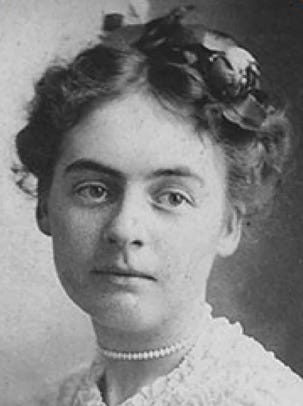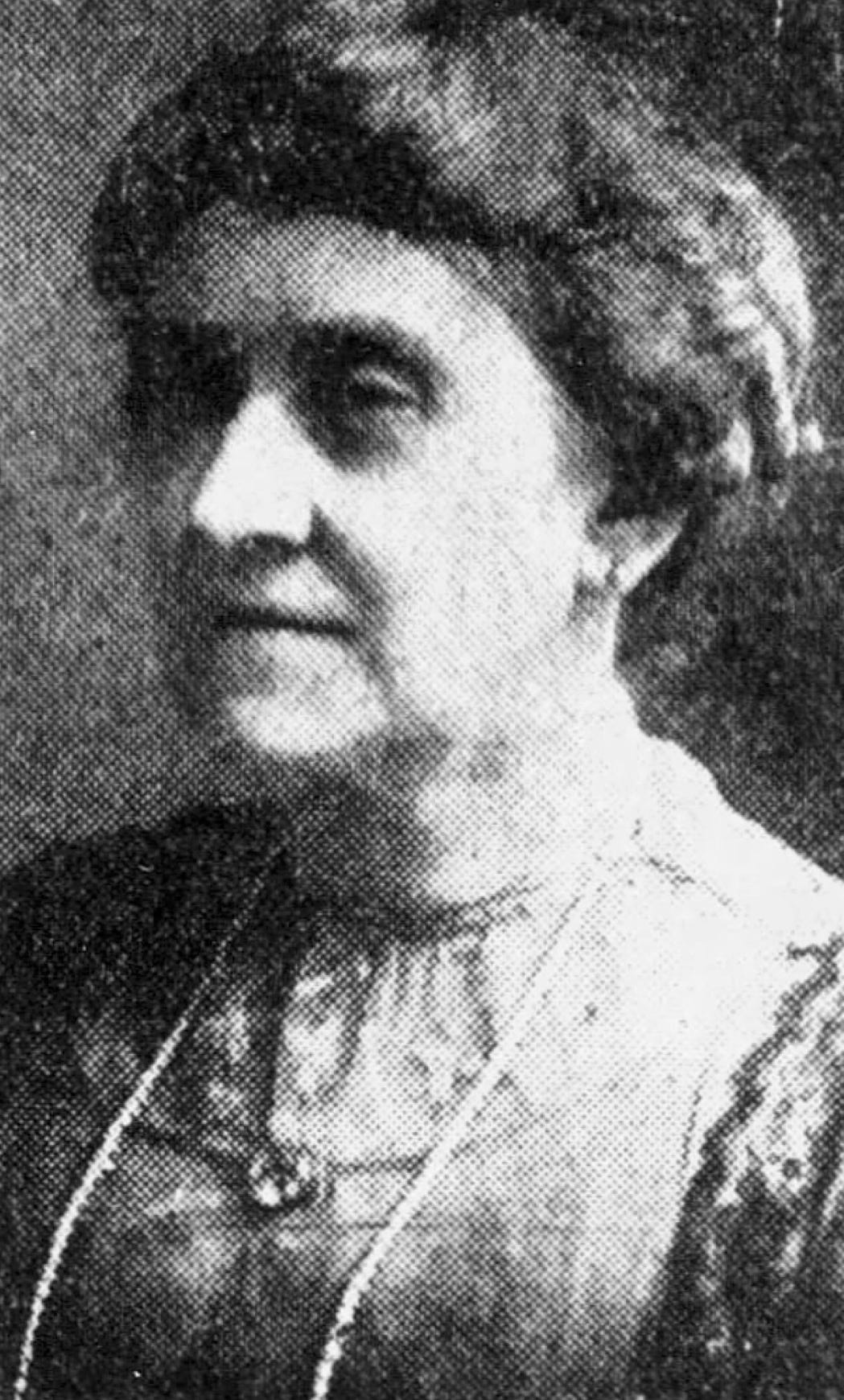As this is the last blog post of women’s history month, I thought it would be nice to highlight a few more stories of some remarkable local women interred at Elmwood Cemetery. The three stories I’m telling today highlight women excelling in the fields of science, arts, and education among other activities. They are not well remembered today, but in their day they were greatly respected members of the community.
Edith Von Kuster was born in Minnesota on March 21, 1885. While it was quite unusual for a woman in the beginning of the 20th century, she would seek an education in science. Most women who did not settle down and have a family worked as teachers, nurses, domestic workers, or in manufacturing. However, for Miss Von Kuster, her passions lay in chemistry, which she attended the University of Minnesota to pursue.
After graduating in 1907, Edith was given a great opportunity. While continuing research at the university she began a correspondence with Frederick Kilmer, the Scientific Director at Johnson & Johnson. He asked her to join the company as one of three staff scientists in the scientific department. In this role she would test raw materials and conduct research, helping to develop new products for Johnson & Johnson.
Edith accepted, traveling to New Brunswick to start her new career. Everything about this decision was bold. It was unusual for a woman to leave her home for a career, although granted it was unusual for a woman to have a career of this type in the first place. In fact, Edith Von Kuster was the first female scientist at Johnson & Johnson.
Edith Von Kuster would have a successful career, eventually marrying William Johnson Kenyon, another employee of Johnson & Johnson. They would have three children, two daughters and a son. Their son, William Johnson Kenyon Jr., would be killed in action in 1945 while serving in Belgium during World War II. Edith Von Kuster would pass away on July 12, 1986 at the age of 101.
Anna Benedict Parker was a local artist who, while not well remembered today, was a successful painter who was active in several artists organizations. Born in September of 1864, she was a member of the Benedict family, a well respected family in New York. She would end up living in New Brunswick after she married Neilson T. Parker. The couple would live on College Avenue for a time. Mrs. Parker would put on exhibitions of her work in New Brunswick, New York, and other places as well.
Described as a clever artist, she would seek community with her fellow painters, joining the The National Association of Women Painters and Sculptors and the National Arts Club. Both of these organizations, although serving artists all over the country, were founded in New York City at around the time that Anna Benedict was getting her start, so it is not unlikely that she became aware of them early in their operations as word spread about them in artists circles in the city.
Her love of art would compel her to move with her husband to Woodstock, New York. While today Woodstock is most known for hosting the eponymous music festival in 1969, Woodstock was at one point known for having the first intentional arts colony in America. Founded in 1902, it would peak in the 1930s when many of the artists would move on due to economic hardship caused by the great depression. Of the artists that stayed, many would work on New Deal Programs such as the Public Works of Art Project and the subsequent Federal Art Project under the Works Progress Administration.
Anna Parker would not live to see that, however, as she would pass away in June of 1922. She had fallen ill while wintering in Europe, and upon returning to America would suffer a relapse of her illness. She passed away in New York City.
Chrissie Barlte devoted her life to her role as an educator. Born August 29, 1865, Bartle would come of age during a dynamic time in American History. It was at this time that public education became a high priority for the country, just as it was for Miss Bartle. She graduated from New Brunswick High School in 1883 and would take extension courses at Rutgers University.
Miss Bartle would begin teaching at Dunham’s Corner for her first teaching job. Her next job would be in the home of Dr. Edward Chevalier, 233 Magnolia Street, Highland Park. Her first class would meet on September 22, 18885, with an initial nine students enrolled. This would increase to 33 by March as a school building was completed.
Following her time teaching in Highland Park, she would teach in Martinsville, Richfield, Warrenville, and finally New Brunswick. She would teach there from 1900 until her retirement in 1935. Her career spanned 5 decades, and she was known to never miss a class. Miss Bartle loved her profession. Upon retiring, she said, “I’m not worried about what the children are going to do without me, but what I’m going to do without them.” She taught tolerance, having no time for those who discriminated against others due to race or faith.
In her personal life she was a suffragist, campaigning for the right to vote; she would serve as treasurer of the Women’s Equal Justice League. Upon retiring she would run to be a member of the Highland Park Borough Council and Board of Education in 1936. She was also a member of the Business and Professional Women’s Club, the Women’s Progressive Democratic Club, and the New Brunswick Teachers’ Club. Additionally, for fifteen years she was the head of the New Brunswick high School Alumni Association. Chrissie Barlte passed away May 21, 1947 at the age of 81.
I hope that this women’s history month has been informative and instilled an appreciation for the many remarkable things that women have done. We at Elmwood Cemetery are proud to share the stories of the many interesting women interred in our cemetery, and we hope that you will continue to follow our blog as we share more stories from our cemetery.
Sources:
“Chrissie Bartle Dies at Her Home.” Daily Home News. May 22, 1947. https://www.newspapers.com/article/the-central-new-jersey-home-news-obituar/38559937/.
DeMelo, Juno. “Meet the First Female Scientist Johnson & Johnson Ever Hired.” Johnson & Johnson, August 22, 2019. https://www.jnj.com/our-heritage/meet-the-first-female-scientist-johnson-johnson-ever-hired.
Falk, Peter Hastings, Audrey Lewis, Georgia Kuchen, and Veronika Roessler, eds. Who Was Who in American Art, 1564-1975: 400 Years of Artists in America. Vol. III. Madison, CT: Sound View Press, 1999.
Gurowitz, Margaret. “Celebrating Edith von Kuster, Who Became Johnson & Johnson’s First Female Scientist in 1908.” Johnson & Johnson, April 21, 2024. https://www.jnj.com/our-heritage/celebrating-edith-von-kuster-who-became-johnson-johnsons-first-female-scientist-in-1908.
“The Historic Woodstock Art Colony: The Arthur A. Anderson Collection.” The New York State Museum, 2018. https://www.nysm.nysed.gov/exhibitions/arthur-anderson-collection.
“Mrs. Neilson T. Parker Called by Death; Was Artist of Great Ability.” Daily Home News. June 7, 1922. http://newbrunswick.archivalweb.com/imageViewer.php?r=1450&in=2766&d=0&s=q%3DAnna%2BBenedict%2Bparker%26p%3D2%26r%3D0.
Passport Applications Jan. 02 1906 - Mar. 31, 1925, NARA microfilm publication M1490; NARA catalog ID 583830.





